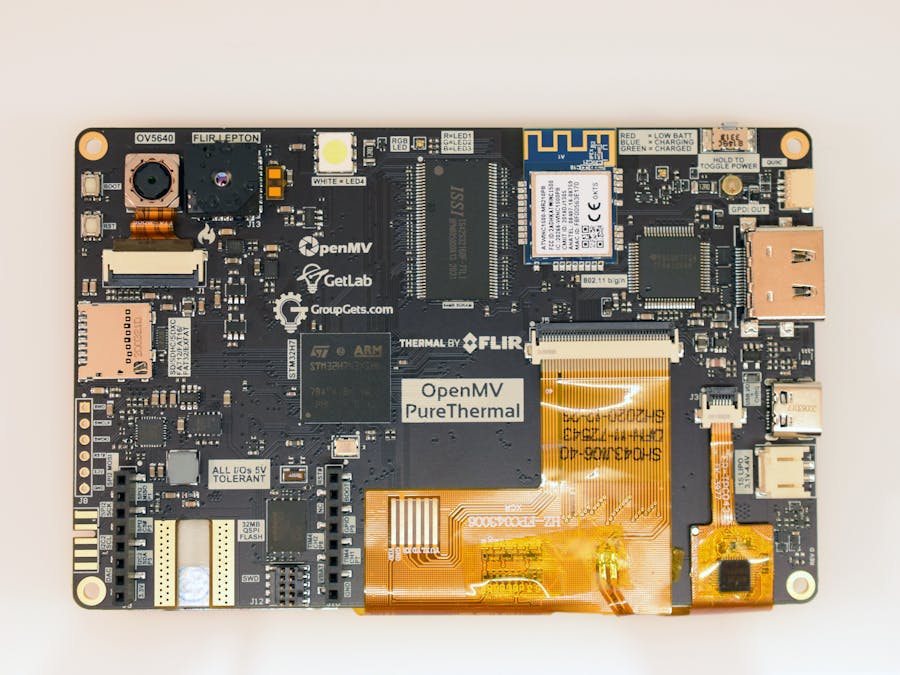The machine vision space has exploded in popularity over the past few years, and when combined with smaller and more efficient machine learning software, the possibilities become nearly limitless. However, the vast majority of products out there today deal with just the light you can see. This is where the OpenMV PureThermal board excels, as it contains not just a regular 5MP camera sensor, but also a socket for plugging in FLIR Lepton modules that let your device see heat signatures. Thermal sensing can be used for so many more applications than are possible with only a visible-spectrum device.
The PureThermal has some very powerful and capable components, including:
- Arm Cortex-M7 STM32H7, which contains one ARM Cortex-M7 core clocked at 480MHz and one ARM Cortex-M4 core clocked at 240MHz
- 64MB of SDRAM
- 32MB of Quad-SPI flash storage
- An OV5640 camera that can capture images at up to 2592x1944 pixels
- A Lepton 2 to 3.5 compatible socket for FLIR Lepton modules
- USB C port running at full speed (12 MB/s) for power, serial connectivity, and as a USB mass storage device (MSD)
- microSD card slot for saving images and machine vision assets
- HDMI port for viewing the video output at 1080p
- A place to solder an ATWINC1500 WiFi module
- An 800x480p LCD with touch capabilities
The main draw of the PureThermal is, as the name implies, thermal imaging. By using a Lepton socket, this device can accept many different kinds of sensors. For example, maybe there's an industrial application that requires a wide field of view and plenty of resolution, in which case the Lepton 3 would be great. Or for something less demanding, the Lepton 2.5 could be swapped in instead. Imaging the countless possibilities is exciting, as problems that were tough before can now be more approachable. These could include:
- Monitoring temperatures across a group of people
- Ensuring motors don't overheat
- Optimizing air flow
Even though the cameras are the primary feature, there are also other components on this board that enable it to reach the next level in terms of connectivity and modularity. Thanks to the microSD card slot, images, videos, and logs can all be recorded over time for future processing or to train machine learning models. The addition of WiFi is also great since alerts and other data can be streamed to IoT hubs via MQTT or a web server's API over HTTP. Add in the battery and this board becomes a computer vision powerhouse that is simultaneously efficient and small.
Developing for a new platform can be daunting and sometimes takes a while to learn. The PureThermal, however, is fully compatible with the OpenMV Cam H7's suite of functions and modules, so porting over code from a pre-existing project is simple. Getting started with writing code for the device is also easy, as there's an IDE from OpenMV for writing MicroPython code. There are libraries for anything from controlling the various peripherals, capturing images, and even running Tensor Flow Lite models.
If all of these features on a single, yet cost-effective board sound compelling, be sure to visit the GroupGets page for the OpenMV PureThermal board.








Comments
Please log in or sign up to comment.